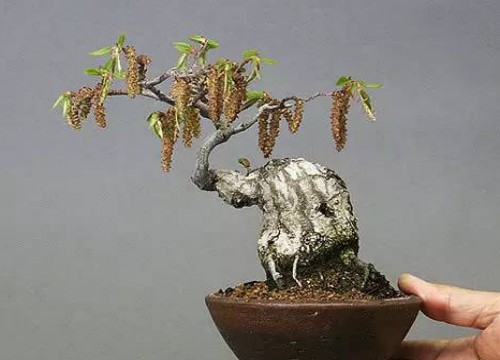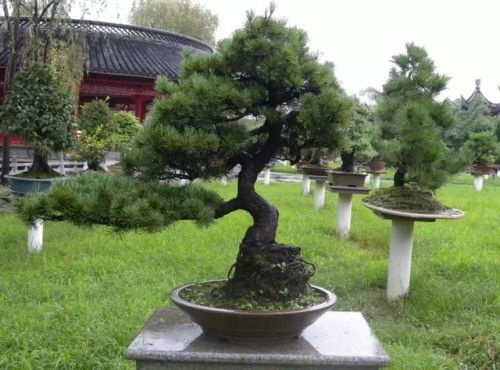The corrective method of bonsai root
The longer the pot is cultivated, the more beautiful the root plate will be, so the age and age of the pot tree can be judged by the root plate. To make a potted plant with a good root plate, it is necessary to use a shallow basin to pile the soil slightly higher than the basin surface, so that the root straddles the high basin soil, slightly exposes the soil surface, expands in all directions, and is exposed to the sun to accelerate its growth and change. If it is created with real-life materials, it can be raised in a basin for one year and planted in a year to shorten the creation time.

Bad roots should be removed and corrected as soon as possible, because taboo roots are closely related to the growth of taboo branches. With the average root extension of the potted plant, the tree potential on the ground will be uniform, and the branches, buds and leaves of the potted tree will be neat and beautiful.
Root correction:
1, curl root, curl root and entangled root, standing root, etc., can be removed, or adjusted by wire, pebbles or bamboo slices. Especially strong growth of the roots should be cut short in advance to regenerate fine roots, so that the roots grow averagely, and it is best to cut off the fine roots where they already exist.
2. If the root is insufficient, the downward root can be torn open, or the branch relying on the root plate can be made up, or the thick root can be torn open.
3. The method of pressing strip can be used to take branches in the air and take root again.
4. let the root expose to the ground and be exposed to sunlight, which is easier to thicken.
5. Use root grafting or seedling grafting; trees with one-sided roots can be reliably connected into double-trunk or multi-trunk, or can be directly connected with roots or replenished by seedlings, or equipped with elegant stone in the rootless part, and the floating root can also be stuffed with elegant stone in the gap.
6. The knife and cone stimulation method can be used, that is, in the place where the root disc is missing, the knife and cone are used to remove the epidermis and cambium, expose the xylem, cover the wound with water moss, and cultivate a strong branch above the wound to promote rooting. especially mountain materials combined with this method can create a beautiful root disk.
Time: 2019-06-12 Click:
- Prev

How to reshape the leaves of bonsai
Cutting off the leaves at the tip of a branch is called thinning leaves. Leaf thinning should not only prevent the growth of branches and promote the germination of axillary buds, but also make the whole tree exposed to the sun evenly, thickening the branches near the roots and thinning the branches of the crown, so that the tree will be strong. If the sun is not easy to penetrate, resulting in poor air circulation, it will weaken the lower branches and leaves of the potted tree.
- Next

Fertilization skills of Pine Bonsai in Spring and Autumn
In the wild, most pine trees grow in poor ridges or high altitude areas, and are pioneer species of positive (good sunlight), which means that pine trees can grow well without using too much fertilizer. Horticultural cultivation in order to enable trees to grow quickly and shorten the cultivation time, fertilizer is still applied.
Related
- Fuxing push coffee new agricultural production and marketing class: lack of small-scale processing plants
- Jujube rice field leisure farm deep ploughing Yilan for five years to create a space for organic food and play
- Nongyu Farm-A trial of organic papaya for brave women with advanced technology
- Four points for attention in the prevention and control of diseases and insect pests of edible fungi
- How to add nutrient solution to Edible Fungi
- Is there any good way to control edible fungus mites?
- Open Inoculation Technology of Edible Fungi
- Is there any clever way to use fertilizer for edible fungus in winter?
- What agents are used to kill the pathogens of edible fungi in the mushroom shed?
- Rapid drying of Edible Fungi

